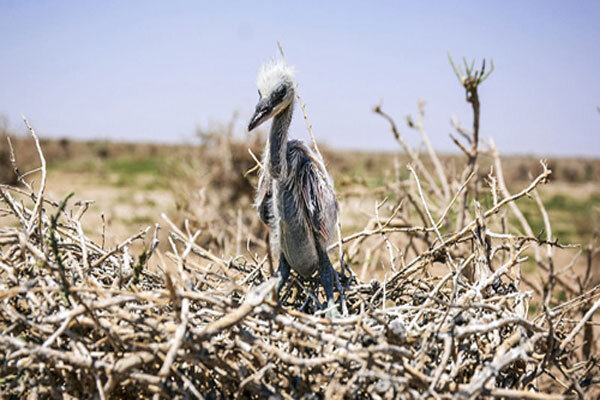Hamoun wetland’s dryness has changed wintering season: official

TEHRAN – Some 400,000 migratory birds that wintered in the Hamoun International Wetland changed their way due to the drought, the head of the Department of Environment of Zabol, Sistan-Baluchestan province, has said.
When the wetland was filled with water, 225 species from 49 genera, which is about half of the identified bird species of Iran, lived in this wetland and its surroundings, IRNA quoted Mehdi Amiri as saying on Saturday.
The birds that migrated to the Hamoun wetland included coots, mallards, moorhens, northern shoveler, common shelduck, pelican, Phalacrocoracidae, harrier, kestrel, falcon, owls, and eagle, he further said.
Coots, mallards, moorhens, northern shovelers, common shelducks, pelicans, harriers, kestrels, falcons, owls, and eagles wintered at Hamouns.Among the aforementioned species, slender-billed curlew and demoiselle crane are critically endangered. White-headed duck and Dalmatian pelican are in danger of extinction, the marbled duck, eastern imperial eagle, greater spotted eagle, and flamingo are vulnerable and 70 species need serious protection otherwise they will be under threat.
The Hamouns are transboundary wetlands on the Iran-Afghan border made up of three lakes: Hamoun-e Helmand, which is entirely in Iran, Hamoun-e Sabari on the border, and Hamoun-e Puzak, almost entirely inside Afghanistan. The three lakes are linked and fed by water from the Helmand River which starts in the Hindu Kush Mountains in Afghanistan.
Hamoun International Wetland, stretching to 570,000 hectares, is considered one of the most important habitats of aquatic and terrestrial migratory birds and has been a shelter for many rare and endangered species for years.
The wetland once supported broad plant and animal diversity and was the main source of the region’s economic viability. But they have nearly dried up due to climate change, dam construction, and other poor water management practices. This has led to large population migrations and a high unemployment rate.
Bird species of Iran
Hosting over 600 species of birds, Iran is a climatically rich country, so it is said that the number of bird species in Iran is higher than in the whole of Europe. A wide range of wetlands is the reason behind migratory birds choosing Iran for an annual wintering habitat, as a large number of birds fly a thousand miles each year to benefit from this rich climate.
Every year, from early September to late February, Iran hosts rare species of migratory birds heading from the north to southern countries due to reduced seasonal temperatures and food availability.
It is estimated that there are about 50 billion birds in the world out of 9,000 species, many of which are migratory. Accordingly, about five to seven million birds migrate to Iran in different seasons. There are about 530 species of birds in Iran, 320 of which are migratory species, some of which are native species.
Among the various groups of migratory birds wintering in Iran, the largest population belongs to the group of geese, swans, and ducks amounting to 781,499 and the smallest population of seven are the long-tailed ducks or oldsquaw.
The provinces of Mazandaran and Golestan are the first provinces with the highest number of migratory birds for having sufficient resources, as the movement of migratory birds is closely linked to the seasonal availability of resources.
FB/MG
Leave a Comment